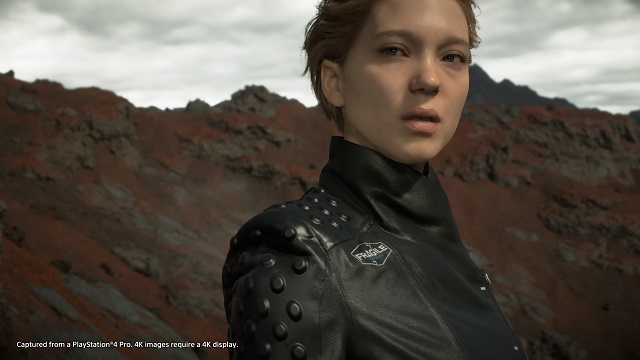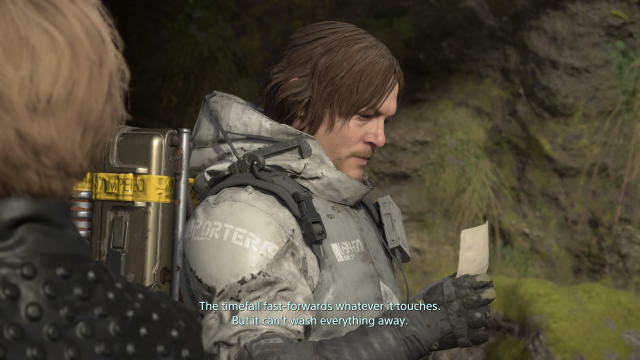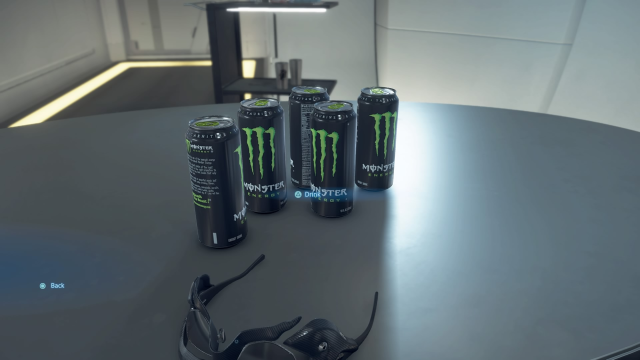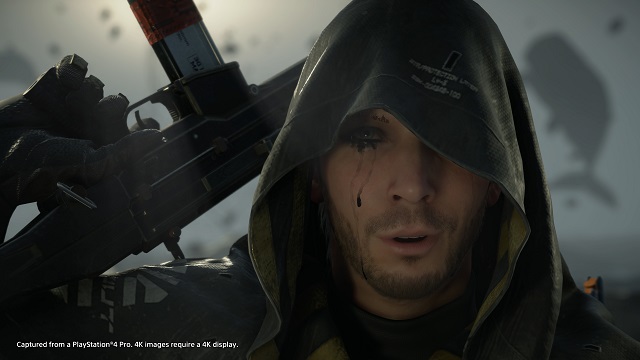Hideo Kojima’s reputation for creating titles that are as strange as they are unforgettable is well-known, even among those who have never touched one of his games. The twists, turns, and idiosyncrasies of the Metal Gear Solid series are the stuff of legend among the gaming community, and the Silent Hills P.T. demo on the PlayStation 3 continues to intrigue even today.
No one knew what Kojima was going to move onto when he and most of his team at Kojima Productions left Konami in 2015. Metal Gear Solid 5 had run its course, Silent Hills was officially canceled, and Kojima Productions moved to become an independent studio soon after they left Konami.
That new venture is Death Stranding.
Death Stranding Review: Patronizing and Dull

It should come as no surprise to anyone who has followed Hideo Kojima over the past decades that Death Stranding is an odd game. Kojima, ever the fan of films over games, seemed to approach designing Death Stranding as an art project rather than a masses-oriented video game. There’s nothing wrong with that, and there’s nothing wrong with art posing as a video game. We’ve seen it done time and time again, but we’ve never seen a full-blown Kojima project outside of Konami’s confines. That is, of course, where things get weird.
I have never considered Hideo Kojima to be a great storyteller. The presentation in his games is always top-notch, but the stories he crafts aren’t really all that far off from what one might see in any given year’s top seinen (young adult male-oriented) manga.
If you’ve watched enough anime or read enough manga, you know what I’m talking about. There are always a handful of twists that are easy to predict, plenty of exposition to ensure the player gets perhaps far too much information at a given time, and convoluted and near-unbelievable scenarios handled by a generally cool-headed lead character.
This sort of storytelling shines in a series like Metal Gear Solid because of the array of interesting characters and their journeys throughout the series. Engaging gameplay certainly helps.
The storytelling method does not do Death Stranding any favors, though. Every single piece of information you could possibly want and then some is thrust into your face at every turn, and it’s done in an eyeroll-inducing style that could only result from mashing together Japanese-style pop storytelling and big Hollywood actors.

It’s very clear from the first time Sam enters Capital Knot City that Death Stranding is an allegory for the current political and social climate in the United States. This in itself is fine, but the game does not give the player the option of personal interpretation.
What little intrigue Death Stranding presents is squashed to the ground in favor of excessive and repeated exposition. You have this huge, barren country with a unique plot backdrop — and every bit of dialog chips away at the mystery without care, as if the player is incapable of grasping the complex concepts within the game’s story.
It’s patronizing, but I’m not sure it intends to be. After all, hyper-exposition is a key point in mainstream Japanese media; and right now, so is the theme of ‘connection’. It’s the idea that people are separating from one another and the drive to reconnect by any means necessary, often by unorthodox methods.
The performances given by Death Stranding‘s slew of actors are naturally the best we’ve seen in any game to date. Norman Reedus, Tommie Earl Jenkins, Lea Seydoux, and the rest of the cast did fantastic jobs bringing their characters to life and making them truly believable. There are some scenes later in the game that are truly memorable because of how well they’re acted, rather than how they’re written.
The problem is the performances don’t make Death Stranding any better. Much like a poor Hollywood script supported by an all-star cast to distract from how utterly cookie cutter and trite the movie itself is, Death Stranding uses its own star-studded cast to hide its subpar writing and convoluted but predictable storyline. Which is predictable because the game refuses to let you off its storytelling leash and interpret things on your own.
Rarely have video games been known for their writing. The original Mass Effect, The Last of Us, Divinity: Original Sin 2, and many others have great writing for the medium and pair it with gameplay that suits their narrative and themes. Death Stranding does this, too, by providing a dull and frustrating gameplay experience to pair with its heavy-handed nonsense.
 No.
No.
Trudging up mountains, traversing plains, and crossing rivers — all the while attempting to balance the many tools and packages you’ve likely burdened Sam with — turns into a slog. The gameplay loop in Death Stranding is simple. You get a particular cargo assignment to pick up and/or deliver, and you make your way to your destination the best way you can.
Sam is able to bring tools with him to make his journey easier. Ladders and other items can be attached to Sam before heading out and are best kept on-hand for emergencies. However, they’re not weightless, and you have to consider his weight balance at all times. If his weight burden is uneven, he’ll be more prone to tripping or will veer and eventually fall to the weighted side.
This is where the trigger buttons come in. You can use the triggers to either hold onto cargo that you otherwise cannot strap to Sam, or you can use them to steady his balance to keep him from toppling over. Falling or dropping cargo can damage it, and it is possible to damage cargo to a point where the recipient just won’t take it.
It’s an interesting dual-use of these buttons and it does make you think about whether you’d rather be a bit more balanced or grab that extra box for additional rewards on turn-in. As the game drags on, Sam gains access to vehicles and the terrain (and the perils it brings) become more dangerous.
The most engaging portions of gameplay are where Sam encounters BTs. While those segments are certainly cool to look at, they’re not exactly a challenge to play and don’t particularly feel rewarding to complete. But the same can be said of the entire game.
Even the social aspects, where players are tasked with placing permanent bridges, ladders, and what have you in order to help other players traverse more easily feels like a big “Who cares?”. Getting a few Likes is nice, but it’s not exactly a motivator. Seeing what other players have constructed and contributed is also nice, but it’s not really a push to play.
Death Stranding is not a rewarding game to play, from either a gameplay or story perspective. Games are well-known for giving players frequent dopamine rushes to keep them going or to provide a sense of achievement. This game does not have that in any regard.

There is no harm in subverting not only a media genre but an entire form of media. Death Stranding does do that, but that is effectually all it does. It subverts video games; it basically shoves an endless movie down your throat while you struggle to enjoy hauling cargo across … nothing.
Normally one is more inclined to be easy on a game that is clearly more geared toward its story than providing an interesting gameplay experience, but in the case of Death Stranding, there is absolutely nothing to keep a person playing who has some sort of standards for their storytelling.
Over the years, I’ve become increasingly jaded towards anime-style storytelling despite my hyper-weebdom and have come to despise the tired crutches so many Japanese pop storytellers rely on. I am also not particularly inclined towards narrative-oriented games — I’m here for the gameplay, music, and not much else. Unfortunately, neither tickled my fancy here.
The hubbub around Death Stranding‘s story and the talk of someone either gets it or they don’t drew me to the game. I was actually very excited to see a new Hideo Kojima project that wasn’t Metal Gear Solid because he had been trying to get away from the series for so long.
Unfortunately for this game, I do read books. I am not a nonce who needs every little thing pointed out for me every 20 minutes lest I forget.
Death Stranding‘s premise is an interesting mish-mash of social issues plaguing more than just the United States and Kojima’s signature warping of those heavier topics into something outlandish and comfortable. However, that is all dashed by the game’s incredibly amateurish writing that seems convinced that the player is an idiot unable to draw context.
For a while, I believed things might not be as obvious as they appeared, but they proved me wrong. Any hopes I had for this to be anything other than a test by Hideo Kojima to see how much people are willing to put up with in a video game in the name of art were utterly crushed.
Death Stranding Review — The Bottom Line

Pros
- Beautiful visuals
- Top-notch acting from the cast at large
- Interesting passive-aggressive experiment on what it means to be a ‘video game’
Cons
- Boring gameplay loop that literally pushes the player to walk and not to much else for hours
- Product placement in a full-price game
- Heavy-handed writing that assumes the player needs everything laid out for them at all times
Death Stranding isn’t exactly what one would consider art. It’s the subversion of the very medium as something that is unwieldy, unfun, and uninteresting that makes it stand out. Nothing else does, though.
[Note: A copy of Death Stranding was provided by Sony for the purpose of this review.]







Published: Jan 31, 2020 03:58 pm